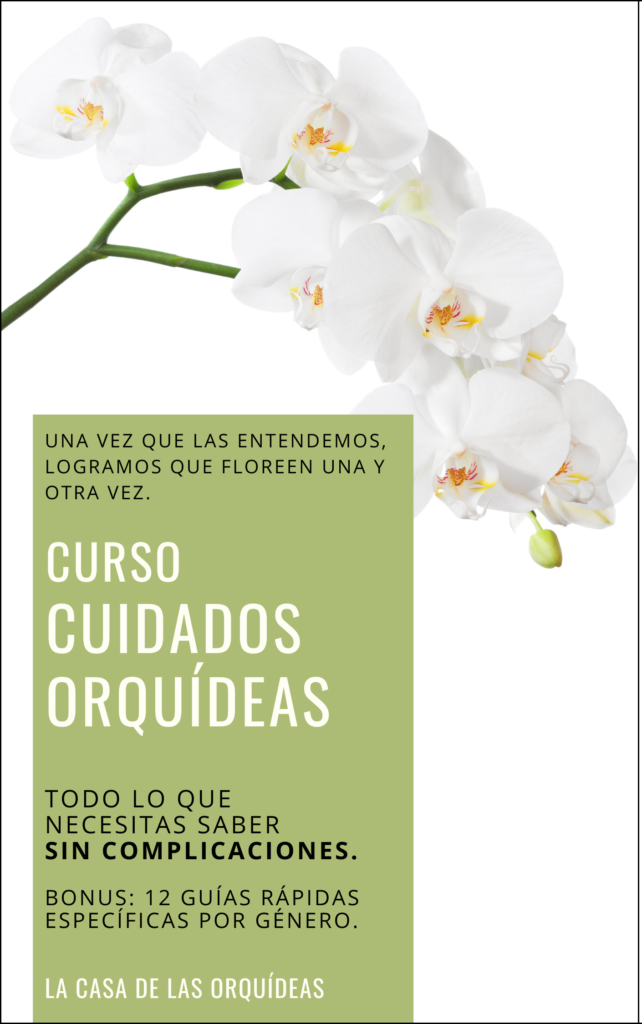+ Spanish
how to fertilize?
It’s important to remember that most orchids grow on trees (epiphyte) or on rocks (litophyte), and some of them on the ground (terrestrial) where they obtain the minerals and nutrients they need to grow.
In nature the epiphytes and litophytes get the needed minerals from the rain that pours over them. This water contains very low concentrations of minerals and is complemented by the organic matter that it collects from the branches on it’s way down. Therefor, orchids do NOT require huge amounts of mineral nutrients and should be fertilized accordingly. Orchids are not tolerant to excess salts and minerals; if you over fertilize you can burn their roots and damage the plant.
Over fertilizing symptoms:
- brown or black root tips
- brown or black leaf tips
- salt accumulation (white or yellowish crystals) on the media or on the edge of the pot
Solution:
Rinse thoroughly with several waterings with pure water and avoid fertilizing for a couple of weeks, or more, until the plant looks healthy again. If the damage is severe, then we have to cut (with disinfected tools) and cauterize the damaged parts and change the organic media for fresh media. If you’re using LECA, you need to rinse it over and over before you use it again.
How we do it growing in semi-hydroponics: once a week we empty the water reservoirs from the pots and vases and rinse with room temperature water. We prepare the fertilizing solution using only half of the dose recommended on the label and complement with worm humus, always with lukewarm water. We cover the side holes in the pots with insulating tape (some of our glass vases don’t have holes) and water up to the base of the plant. We let them soak for 10 to 20 minutes (depending on the weather) and them empty the vases and pots leaving only the water reservoir. For 3 weeks we use fertilizers, on the 4th week we only use water to give the plant some rest. During the colder months we space the waterings from 7 days to 10 days in between or even 2 weeks.
If your using moss or bark, rinse the media abundantly under the faucet; afterwards, fertilize as we describe above.
If you rather fertilize every two weeks, use the amount set on the label and alternate the waterings one week with pure water and one week with organic + inorganic fertilizers. Always use room temperature – lukewarm water!!
fertilizer types
There are inorganic and organic fertilizers. All of them consisting of 3 main ingredients:
– Nitrogen (N): promotes general growth
– Phosphorus (P): promotes flowering
– Potassium (K): promotes strong roots
The proportion found in any given fertilizer is indicated in the label by a code of three numbers, for example: 20-10-10 (N-P-K). This means that it contains 20% nitrogen, 10% phosphorus and 10% potassium. The remaining 60% is constituted by other minerals such as calcium, magnesium, cobalt, iron, etc.
These ingredientes are mixed in different proportions due to the plant’s different needs throughout the year.
When the plant is in it’s flowering period, it will require a combination that has note phosphorus (e.g, 4-8-7); when it is in active growth, it will require more nitrogen and potassium (e.g., 7-4-10).
FACT: orchids also absorb nutrients through the underside of their leaves
Ferts are sold in various forms: granules, liquid, tablets, powder, etc. We recommend the use of those specially formulated for orchids and that are water soluble (concentrates, powders or granules).
Those that aren’t water soluble, or often called slow release ferts, have high mineral concentrations that can burn the roots easier.

